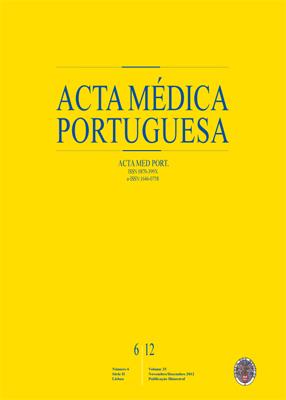DNA Ploidy is an Independent Prognostic Biomarker in Breast Invasive Ductal Carcinoma
DOI:
https://doi.org/10.20344/amp.1356Abstract
Objective: To evaluate ‘classic’ prognostic parameters, as well as DNA ploidy and S-phase fraction, in relation to disease-free andoverall survival in breast invasive ductal carcinoma with long-term follow-up.Material and Methods: The study involved 400 patients with breast invasive ductal carcinoma and median follow-up of 134 months(50-240). Histological grading, tumour size, axillary nodal involvement, pathological staging and hormone-receptor status were assessedas established prognostic markers. Ploidy and S-phase fraction were determined prospectively by DNA flow cytometry usingfresh/frozen tissue. A Cox regression model was used for statistical analysis of the prognostic variables.Results: There were 106 deaths (26.5%) and 141 disease recurrences (35.2%) during follow-up. Two hundred thirty-five (58.7%) tumourswere aneuploid. High S-phase fraction and aneuploidy were associated with tumours with higher grade of differentiation, greatersize and negative hormonal receptors. In univariate analysis, all the clinicopathological and cytometric features (including patients <40 years and a subgroup presenting hipertetraploid/multiploid tumours), but S-phase fraction and estrogen receptors for disease freesurvival, significantly correlated with clinical outcome. In multivariate analysis, advanced disease stage, DNA aneuploidy and lack ofprogesterone receptors retained statistically significant association with shorter survival. In the subgroup of patients with intermediatedifferentiation tumours (G2), aneuploidy associated with worse prognosis. In the subset of node-negative patients, only estrogen receptorsshowed significant correlation with disease evolution. In node-positive patients, greater size tumours and aneuploidy (in relation tooverall survival) were indicators of worse prognosis.Conclusion: Along with disease staging and hormone-receptor expression, DNA ploidy is an independent prognostic biomarker oflong-term survival in breast invasive ductal carcinoma.
Downloads
Downloads
Published
How to Cite
Issue
Section
License
All the articles published in the AMP are open access and comply with the requirements of funding agencies or academic institutions. The AMP is governed by the terms of the Creative Commons ‘Attribution – Non-Commercial Use - (CC-BY-NC)’ license, regarding the use by third parties.
It is the author’s responsibility to obtain approval for the reproduction of figures, tables, etc. from other publications.
Upon acceptance of an article for publication, the authors will be asked to complete the ICMJE “Copyright Liability and Copyright Sharing Statement “(http://www.actamedicaportuguesa.com/info/AMP-NormasPublicacao.pdf) and the “Declaration of Potential Conflicts of Interest” (http:// www.icmje.org/conflicts-of-interest). An e-mail will be sent to the corresponding author to acknowledge receipt of the manuscript.
After publication, the authors are authorised to make their articles available in repositories of their institutions of origin, as long as they always mention where they were published and according to the Creative Commons license.









